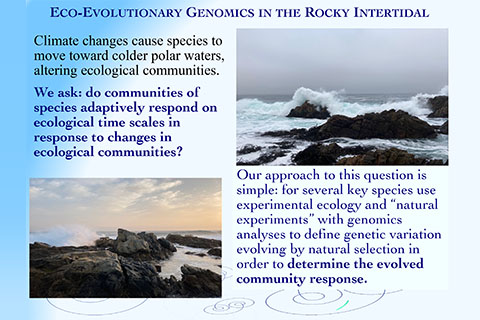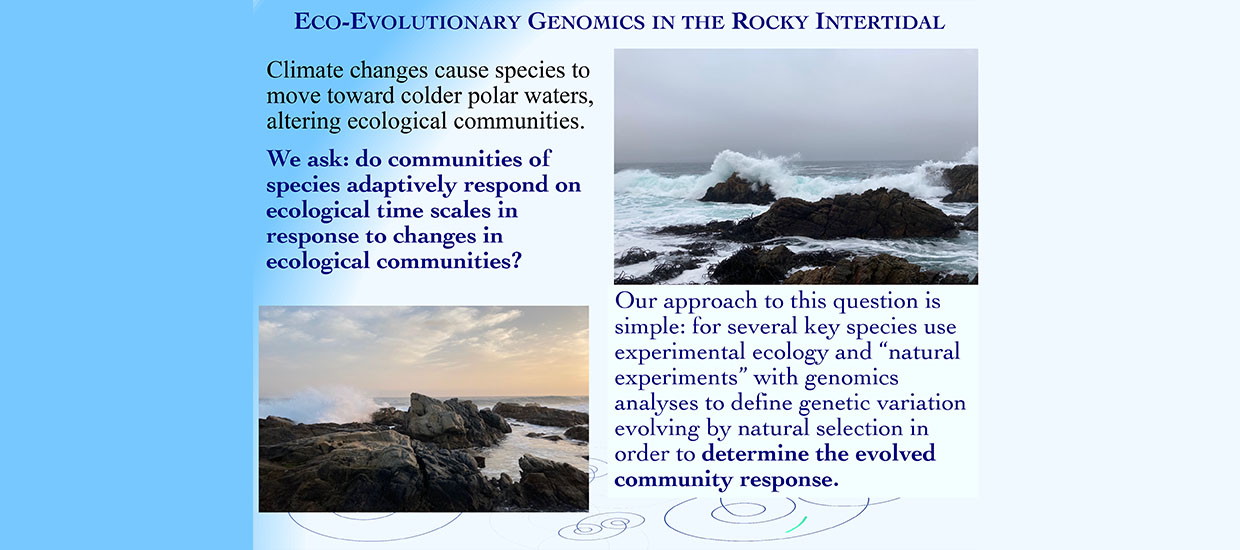Most of our research focuses on the teleost fish Fundulus heteroclitus because it has many nice experimental attributes:
- Large enough to measure organ specific functions, yet small enough to house 100’s of individuals.
- A well-established phylogeny with taxa distributed in different thermal environments and salinities and exposed to a variety of stressors (pollution, hypoxia, environmental degradation).
- Large populations (> 10^5) that should allow evolution by natural selection to dominate neutral drift.
- Significant divergence among populations and between sister taxa.
- A rich history of scientific research.
Our goals are to combine genomic analyses with measures of enzyme function, physiological performance or development to better understand how animals work and the evolution of adaptation. It is the combination of genomic approaches with physiology and evolutionary analyses that provides insights into biology. We use genomic tools to analyze population genetics and quantify genome wide patterns of mRNA and protein expression. We apply these tools, versus a candidate gene approach (i.e., researching one or a few genes or proteins), because our data suggest that there may be many different solutions to similar ecological or evolutionary problems. Thus, examining many 100’s or 1000’s of genes (versus examining one or a few candidate genes) provides a fuller understanding of adaptation, health or physiological performance.
Currently, we measure development, organ specific metabolism, oxygen consumption, and enzyme function and combine these measures with measures of mRNA and protein expression using RNA-Seq or proteomics. We have a second-generation microarrayer (i.e., the robotics for producing microarrays) as well as robotics for automating DNA/RNA purification, setting up PCRs or sequencing reactions. That is, we are set up for high-throughput analyses. Additionally, we outsource next generation sequencing, genotyping and proteomics. These tools have been applied to studies on development, divergence among populations and the effect of environmental stressors. Our approaches provide lots of data that at times are a challenge to analyze and understand. Yet, we apply these genomic approaches because they provide a broader perspective of evolutionary adaptation and a deeper understanding of how animals work.





